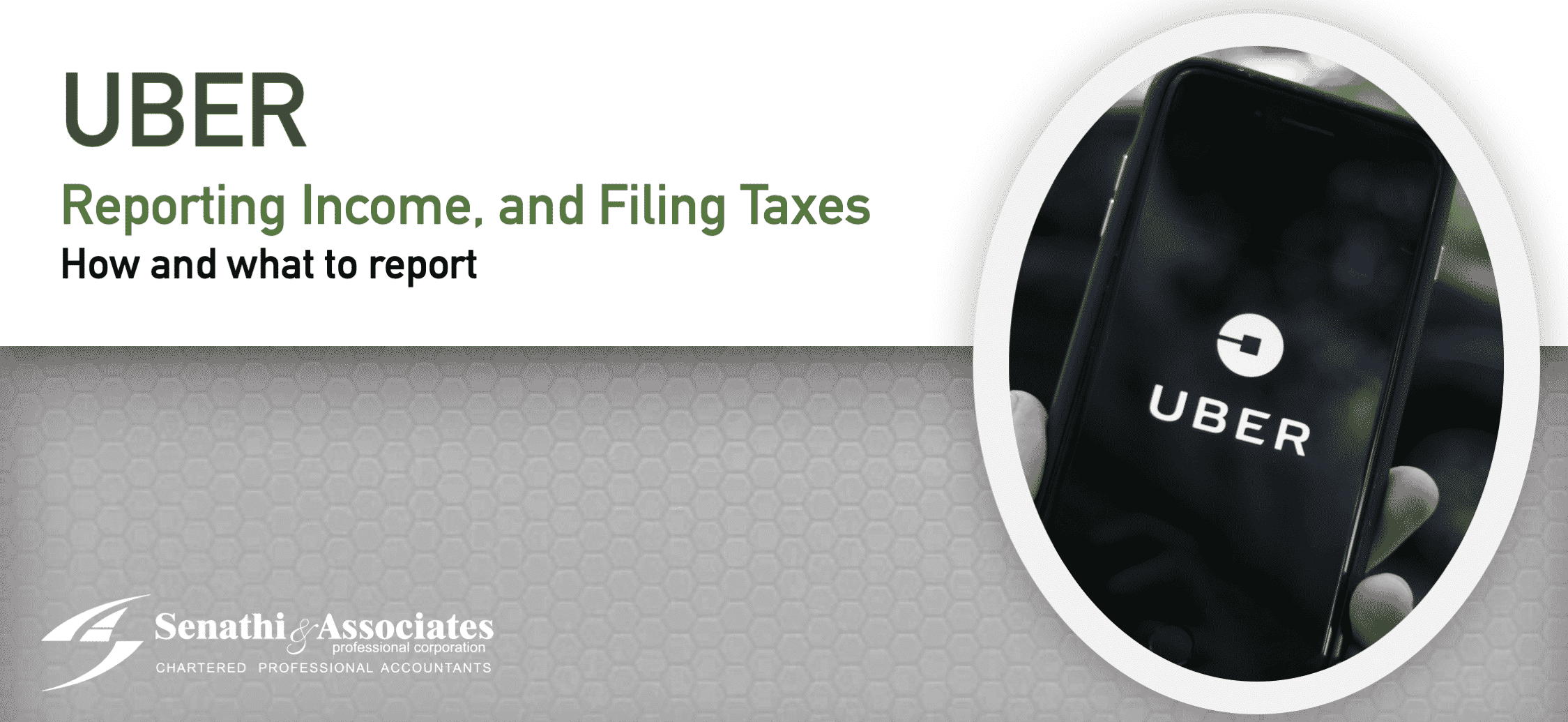UBER: Reporting Income, and Filing Taxes
Uber has become an incredibly popular source of self-employment for many Canadians. The flexibility and reliability provided by the group provides a simple yet high-return income that accommodates the varying circumstances of Canadian families and their lifestyles. A common misconception by many Canadian drivers is that Uber income does not need to be reported for income tax – this is false. Although the income made as an Uber driver is considered self-employment income, it is equally subject-able to taxes just like any other income and must be reported annually to the CRA. So how exactly does taxation work for Uber drivers? Here’s our in-depth breakdown of how, and what to report for income made through Uber.
How to report
As an Uber driver, you are not classified an employee but rather a “partner” of Uber – you’re an independent contractor, aka self-employed. This means that you won’t receive the usual T4 slip from an employer detailing gross income and any tax subtractions. As a result, you’ll have to fill a T2125 form and include it with your other income on your T1 income tax return. This means that you’ll have to personally apply any valid income taxes and deductions yourself. Also, as an independent contractor, you will need to enter your Rideshare Partner information on the Form T2125, essentially stating that you’re a partner with Uber
Reporting Income
To view the total income you’ve earned in a year as an Uber driver, visit your Uber profile to gain access to your tax summary. The tax summary provides a detailed breakdown of your earnings (gross fares) and potential business expenses – It’s not an official tax document but helps in giving you a breakdown. Uber tax summaries are normally available as of early February for the previous tax year (20×0 tax summary will be available February 20×1)
Reporting Expenses
Just as you would with any other tax return, there are expenses you can claim and apply for deductions that specifically apply to Uber driving. Be sure to have all receipts, bills and statements for everything you are claiming as a deductible expense – used to calculate returns using the detailed method. In the event that you do not have records of expenses, you can use the simplified method to calculate expenses. For Uber drivers, the simplified expense breakdown multiplies the total km you’ve driven – as shown in your Uber profile – by the standard $/km rate in your province. The current rate in Ontario is at $0.58/KM for the first 5000KM, and $0.52/KM for the remainder.
Valid expenses are listed below
Mileage
- Uber Tax Summary will state your ON TRIP Mileage.
- Using a beginning and ending odometer reading, can view your total mileage to calculate the business-use portion of your vehicle expenses.
Uber costs
- Booking fees
- Service fees
Vehicle Expenses
- Cost of vehicle
- Can only be done if you capitalize the vehicle – If vehicle is capitalized, can claim a percentage as capital cost allowance (CCA) each year. For passenger vehicles there is a ceiling of $30,000 plus GST/HST and provincial sales tax which can be used for determining CCA. The rate is 30%.
- Mileage
- Lease Payments
- Car Loan Payments (Interest Portion)
- Insurance
- Tolls & Parking Costs
- Licensing & Registration
- Vehicle Operating Costs (Gas, Oil + Tires, Maintenance)
Driver’s expenses
- Stationary for the vehicle – spent on passengers
- Any snacks or drinks provided to passengers
- Any equipment purchased to accommodate passengers
- Cell phone expenses
- can claim the airtime expenses such as phone calls and data charges,
- If phone is classified as a capital asset, can be applied for CCA of 20%

